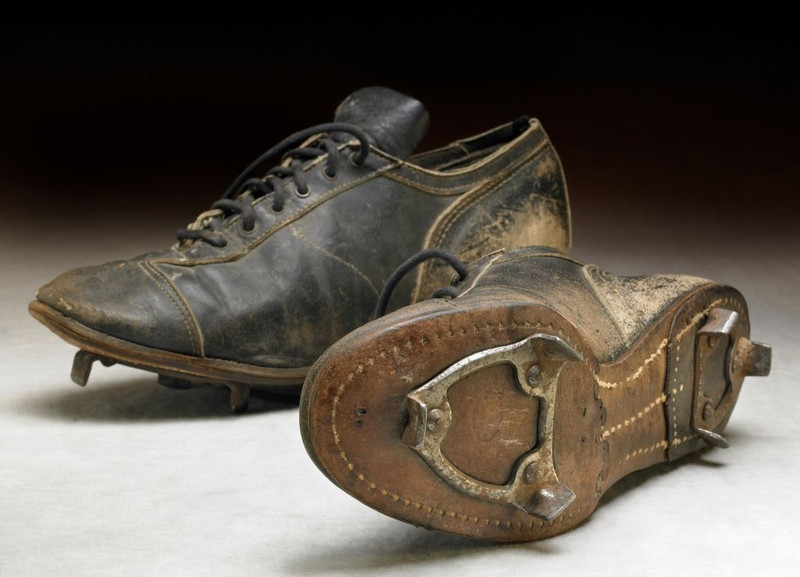It's rare that increased safety and competitive advantage would result from the same innovation. The introduction of baseball cleats in the 19th century did just that. A stable grip on grass and dirt while running the bases or fielding a ball can mean the split second difference between 'out' and 'safe' for either team. Also, better traction and ankle support helps to prevent nasty sports injuries.
Even the earliest baseball players recognized this and incorporated the habits of other sports into the new national pastime. Phoenix Bats looked at the history of the baseball cleat and how it has evolved with baseball over the years.
1500s: Cleats get a foothold in soccer
Leather shoes with spikes, like those used in golf, were used by armies all the way back in Greek and Roman times. It was natural to bring that type of shoe into the fields of play from the fields of battle. The first written documentation of cleats in sports was in 1526. King Henry VIII ordered “football boots” with studs on them, according to Doug Lennox in his book Now You Know Soccer.
1860s: Do-It-Yourself cleats appear in baseball
Paul Butler is credited with being the first player to use soccer style cleats or spikes on baseball shoes in about 1862. The spikes were detachable and could be purchased for about $1.50 separately from these shoes. Innovations quickly came to adapt shoes for the motions of baseball instead of golf and soccer. Plates used to connect the spikes and add additional surfaces for traction were introduced in the 1870s by Spalding.
1880s: Baseball shoes with built-in cleats
Waldo Claflin started selling leather shoes specifically marketed as baseball shoes with built-in steel cleats in 1882. These were adopted by many major league players. New developments for the next 80 years involved comfort, style and materials - rather than major changes in the cleats themselves.
1960s to now: Artificial turf
The introduction of artificial turf meant shorter cleats and the re-introduction of removable cleats. Players who liked a particularly comfortable shoe had to be able to change their cleat studs out for shorter studs for artificial turf games and back to longer cleats for natural grass.
Safety and injury prevention
In 1976, Major League Baseball outlawed sharp metal golf-style spikes to protect fielders from sliding into offensive players. Accordingly, plastic studs were developed in the 1980s to improve player safety. Frequent changes in leagues for all age groups make sure shoes are safe not only for players, but also their opponents.
Podiatrists strongly recommend purchasing new shoes for each child that enters little league that are correctly fitted for the player. The American Academy of Orthopaedic Surgeons reminds everyone that proper gear is vital to reduce the 500,000 baseball injuries per year and keep baseball fun for players of all ages.
Check out our related posts!

